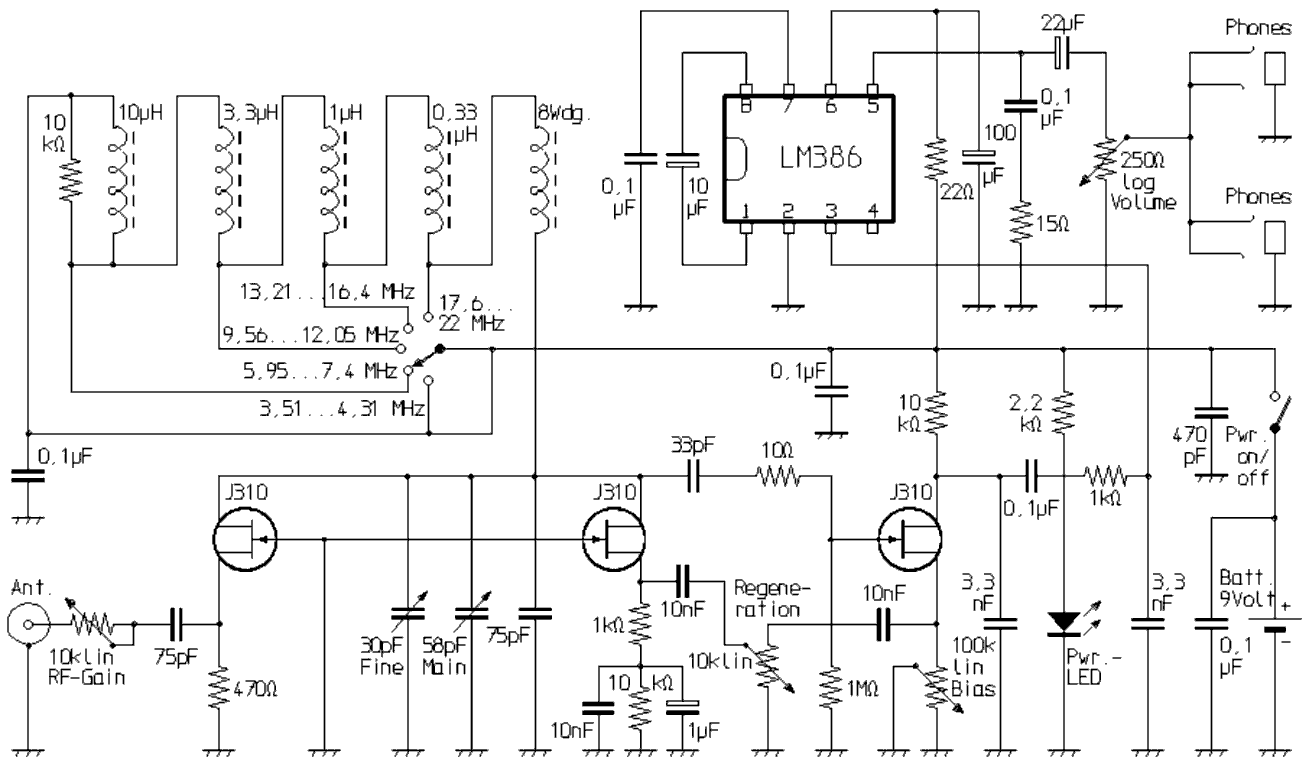The Regenerative Receiver MFJ-8100

Here's the schematic of the MFJ-8100 regenerative receiver produced by MFJ Enterprises. The circuit offers many suggestions for your own experiments. The RF part works with three field effect transistors (FET) of the type J310, the AF part with the very popular LM386 integrated circuit. Very replica-friendly is the use of pre-wound coils for the lower four frequency ranges. Only for the top area a small toroidal coil with 8 windings has to be wound.

In principle, it is a regeneration receiver in the manner of an audion. In the input there is a RF preamplifier with a FET in gate grounded arrangement. That makes the tuning largely independent of the antenna. The second FET also works in a gate grounded arrangement. It only serves to amplify the voltage in the feedback branch. The third FET works as a kind of an audion detector in source grounded arrangement. For the regeneration, it also works as an RF amplifier in a drain grounded arrangement. With this basic circuit, the voltage gain is always less than one, which would not be sufficient for undamping the resonant circuit. The arrangement with the second FET as a voltage amplifier results in in-phase feedback with sufficient loop gain. This makes it possible to use a simple resonant circuit without taps or coupling windings, which considerably simplifies the wiring of the wave switch and makes the overall structure of the RF part very uncritical.
The regeneration is adjusted in an unusual way by a potentiometer in the signal branch. Although this requires a potentiometer that is sufficiently suitable for RF applications, it has the advantage of a soft oscillation approach and less frequency influencing. The potentiometer in the source conduction of the third FET is used to set the bias point and is adjusted to the best compromise between good amplification and clear sound.
Once the regeneration is set shortly before the approach of the oscillation, the device enables clean reception from AM radio stations without having to constantly readjust the feedback potentiometer. Compared to cheap or older world receivers, as with all direct receivers, the lack of any image frequencies is noticeable very positive. The device is also quite suitable for SSB and telegraphy reception. To do this, the feedback adjuster only needs to be turned a little beyond the start of the oscillation. The circuit then works as a very sensitive direct conversation receiver. However, there is no sideband suppression. In contrast to many other regeneration receivers, the circuit has very little tendency to synchronize, so that the SSB reception also sounds very clean.
